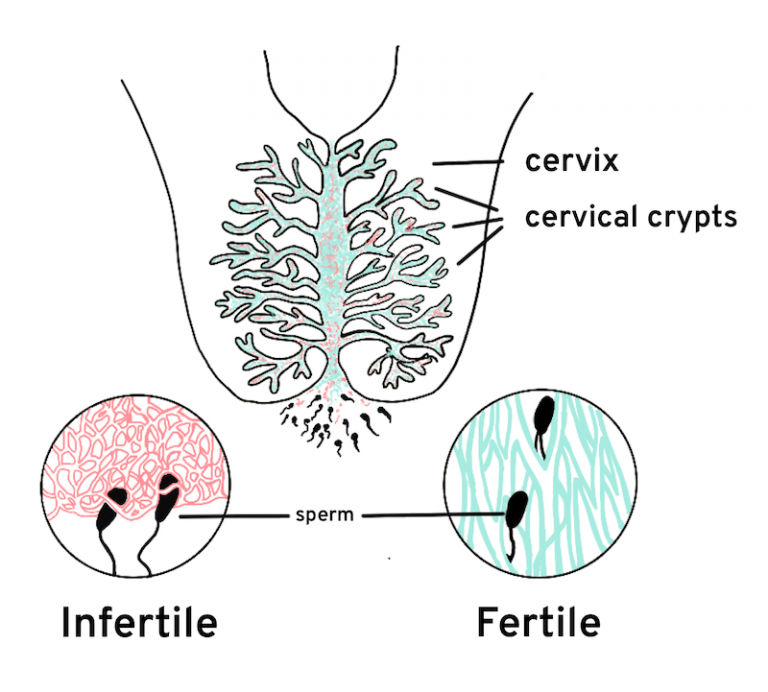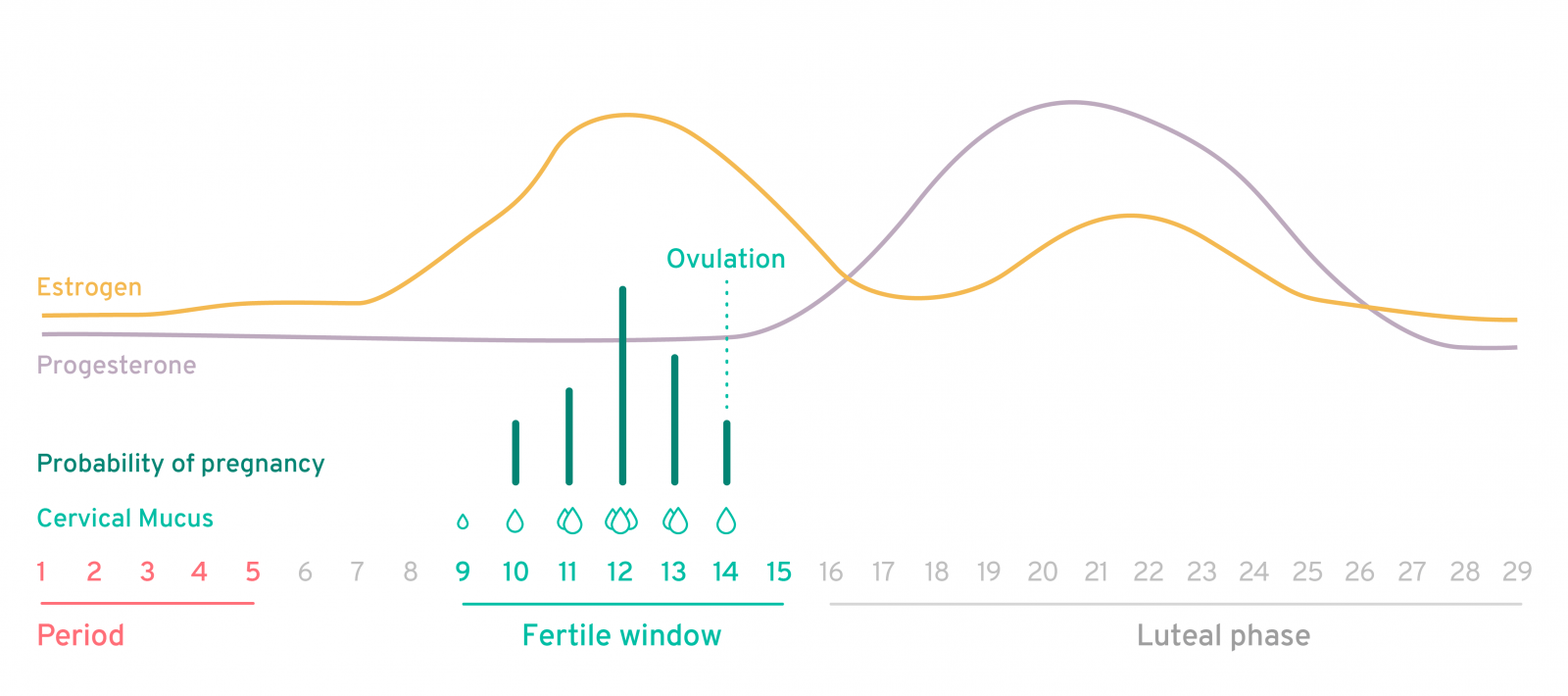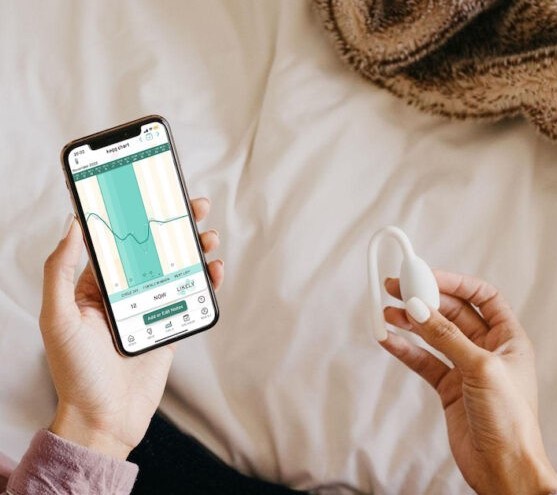Science behind kegg
Through kegg’s intelligent algorithm and decades of scientific research on cervical fluid, kegg equips you with a stress-free fertility tracker.
Unlocking cervical fluid research
The first scientific research on the changes in cervical fluids within the menstrual cycle dates back to 1946.1
Our team of kegg engineers and physicians spent 3 years of research and discovery, to apply existing science to monitoring this key fertility sign through impedance technology. kegg tracks the changes of electrolyte levels in vaginal fluids associated with the beginning and the end of the fertile window.
On average, most couples are able to get pregnant within six months to a year.2 However, a study of couples using a cervical fluid-tracking method known as the Creighton Model found that 76% of the couples conceived within the first month of trying. 90% of the couples conceived after the third month and 100% after seven months.3 Focusing on cervical fluid allows couples to recognize when they are fertile and therefore, when they are most likely to conceive.

Unlocking cervical fluid research

The first scientific research on the changes in cervical fluids within the menstrual cycle dates back to 1946.1
Our team of kegg engineers and physicians spent 3 years of research and discovery, to apply existing science to monitoring this key fertility sign through impedance technology. kegg tracks the changes of electrolyte levels in vaginal fluids associated with the beginning and the end of the fertile window.
On average, most couples are able to get pregnant within six months to a year.2 However, a study of couples using a cervical fluid-tracking method known as the Creighton Model found that 76% of the couples conceived within the first month of trying. 90% of the couples conceived after the third month and 100% after seven months.3 Focusing on cervical fluid allows couples to recognize when they are fertile and therefore, when they are most likely to conceive.
What is cervical fluid?
Cervical fluid is a hydrogel that nourishes sperm and influences sperm penetration; it’s made up of mucin molecules, water, chemical and biochemical compounds like sodium chloride, protein chains, and enzymes. These elements make up the electrolyte structure of cervical fluid and the concentration changes throughout the cycle.4 This is essentially what kegg measures!
During the first part of the cycle, rising estrogen levels cause the cervix to secrete cervical fluid (also known as cervical mucus). When observed, cervical mucus can take on different textures and sensations throughout the fertility cycle.5
These changes are healthy, normal, and a key sign to pinpointing your fertility.
When it comes to cervical fluid, no other biological marker has been proven to give such dependable, real-time insights for women trying to conceive. This makes cervical fluid the key fertility sign to recognizing the fertile window and possible ovulation within each menstrual cycle.

What is cervical fluid?

Cervical fluid is a hydrogel that nourishes sperm and influences sperm penetration; it’s made up of mucin molecules, water, chemical and biochemical compounds like sodium chloride, protein chains, and enzymes. These elements make up the electrolyte structure of cervical fluid and the concentration changes throughout the cycle.4 This is essentially what kegg measures!
During the first part of the cycle, rising estrogen levels cause the cervix to secrete cervical fluid (also known as cervical mucus). When observed, cervical mucus can take on different textures and sensations throughout the fertility cycle.5
These changes are healthy, normal, and a key sign to pinpointing your fertility.
When it comes to cervical fluid, no other biological marker has been proven to give such dependable, real-time insights for women trying to conceive. This makes cervical fluid the key fertility sign to recognizing the fertile window and possible ovulation within each menstrual cycle.
Why is cervical fluid so important?
Cervical fluid plays a critical role in conception. Sperm cannot survive in the female reproductive tract unless cervical fluid is present. Did you know that ovulation only happens within one day? Once the egg is released from the ovary, it only has 12 to 24 hours to be fertilized.6 With the help of cervical fluid, sperm can be kept alive for up to 5 days.

Probability of Pregnancy from Intercourse on Days Relative to Ovulation

Why is cervical fluid so important?
Cervical fluid plays a critical role in conception. Sperm cannot survive in the female reproductive tract unless cervical fluid is present. Did you know that ovulation only happens within one day? Once the egg is released from the ovary, it only has 12 to 24 hours to be fertilized.6 With the help of cervical fluid, sperm can be kept alive for up to 5 days.
Probability of Pregnancy from Intercourse on Days Relative to Ovulation

How does kegg track cervical fluid?
Women typically have the most fertile cervical fluid 2–3 days before ovulation. Intercourse on these days tend to offer the best chances for conception.7
Within the fertility cycle, increasing estrogen causes the electrolyte levels in cervical fluid to change. kegg uses a proven and precise measurement technology to detect the fertile window and hormonal switch from estrogen to progesterone dominance that comes with ovulation. This is done with impedance technology. During the brief test, kegg uses very low-level electrical pulses to sense how your cervical fluid affects those pulses. Through this precise sensing technology, kegg can help to predict a more accurate fertile window in comparison to probability-based options such as period tracking apps and counting methods, which estimate the fertile window and are often inaccurate.
Impedance technology has been proven successful at detecting ovulation for decades, except it wasn’t applied to humans but rather farm animals...Yep! You read that right...

It's finally time this technology is invested into women’s health.
How does kegg track cervical fluid?

Women typically have the most fertile cervical fluid 2–3 days before ovulation. Intercourse on these days tend to offer the best chances for conception.7
Within the fertility cycle, increasing estrogen causes the electrolyte levels in cervical fluid to change. kegg uses a proven and precise measurement technology to detect the fertile window and hormonal switch from estrogen to progesterone dominance that comes with ovulation. This is done with impedance technology. During the brief test, kegg uses very low-level electrical pulses to sense how your cervical fluid affects those pulses. Through this precise sensing technology, kegg can help to predict a more accurate fertile window in comparison to probability-based options such as period tracking apps and counting methods, which estimate the fertile window and are often inaccurate.
Impedance technology has been proven successful at detecting ovulation for decades, except it wasn’t applied to humans but rather farm animals...Yep! You read that right...
It's finally time this technology is invested into women’s health.
How may that look for your cycle?
The old school rule of “The menstrual cycle is 28 days long and ovulation always occurs on day 14” just isn’t true for many women, and relying on this myth can reduce your chances of conception. The truth is, women can ovulate sooner or much later than their cycle day 14.
As estrogen increases it stimulates the production of cervical fluid. During this time, users will typically see their daily kegg values begin to descend. The fertile window usually consists of descending values, followed by a rising data point once ovulation has occurred. After ovulation, kegg data may remain higher, or users may observe some dips as well. Everyone’s cycle is unique. No two charts are alike. kegg’s intelligent algorithm and fertility insights can take the guesswork out of cycle charting.
*Please note that no fertility device can confirm ovulation.
So, what makes kegg different?
Basal body temperatures (BBT) Can help confirm ovulation after it has happened. Temperatures can also be easily skewed by irregular sleep patterns, sickness, travel, certain medications, and more.
Ovulation Predictor kits (OPKs), are used to detect the luteinizing hormone surge in urine that may occur 24-36 hours before ovulation. OPKs neither detect nor confirm the ovulation. A woman can get a positive OPK without ever ovulating or a woman can ovulate without a positive OPK test. If waiting to time intercourse to a positive OPK, many couples might miss crucial days of the fertile window.
With kegg, users can conveniently detect the fertile window earlier and more precisely than when testing with ovulation predictor kits (OPKs) or basal body temperature (BBT) alone.
Note: kegg is not a contraceptive device. kegg is a fertility tracking monitor, which means that you can use kegg as a complementary tool to your preferred fertility awareness-based method.
A powerful tool for
Fertility Awareness
The term “fertility awareness-based methods” (FABM) refers to different methods of identifying the fertile period during the female cycle.
As women can only get pregnant from sex that happens during the fertile window, it’s important to track different fertility signs so you can feel most confident in carefully timing intercourse.
The basis of FABMs relies on a woman’s understanding and recognition of her fertility. There are many methods available to track fertility like the Sympto-Thermal Method, Creighton Method, and more. kegg can be a reliable fertility tracker to help users detect their fertile window and possible ovulation.
At kegg, our motto is “Fertility understood”. We believe women deserve the best technology and experience when it comes to tracking their fertility.

Is kegg right for me?
You don’t have to wait to track your cycle until you’re ready to get pregnant. Tracking gives you more insight and information about you – and what’s going on in your body. It’s information that then can become talking points with your health care providers, particularly if things don’t seem to be as they should. And sometimes, just knowing what’s going on can give you serious peace of mind.
[elementor-template id="2976"]
